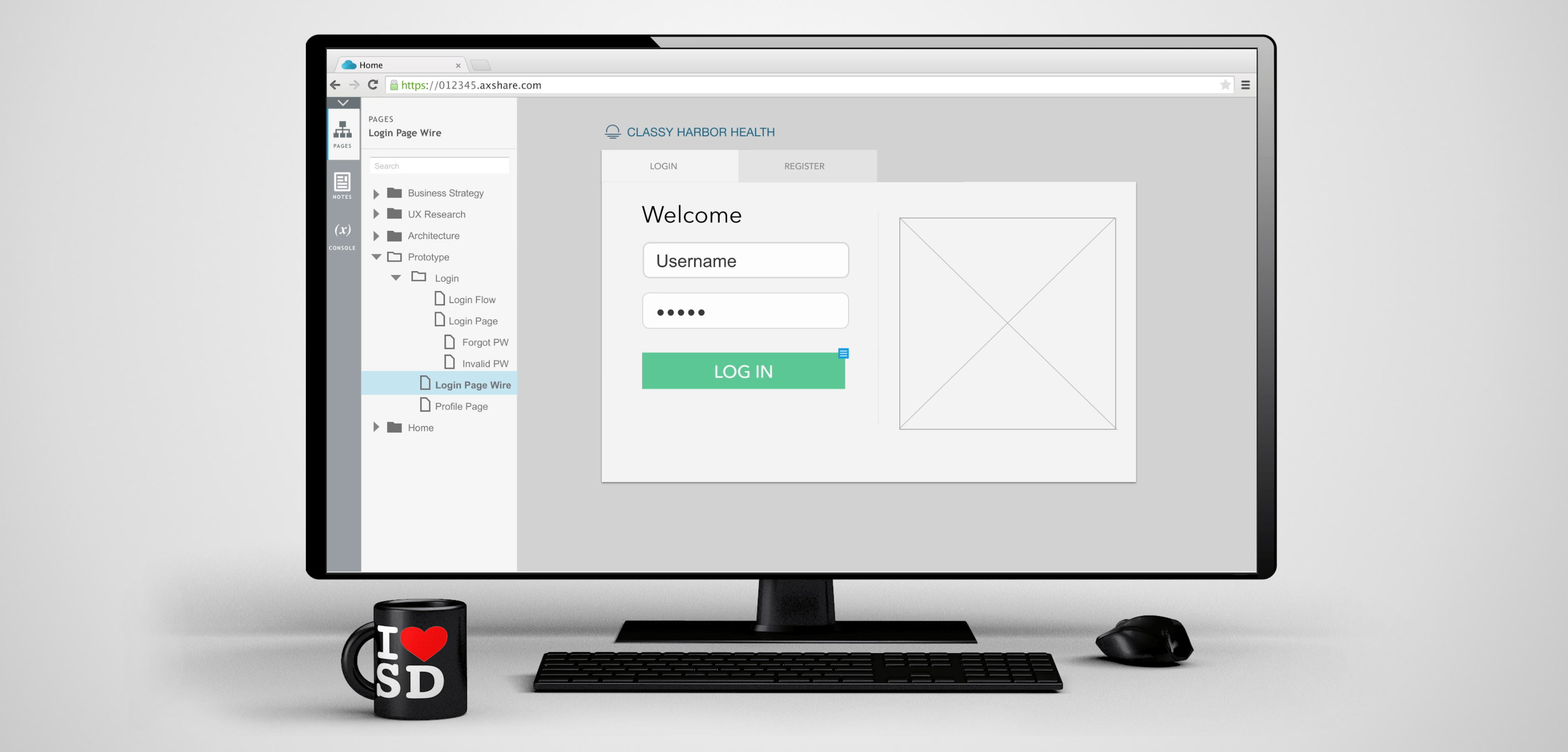Inspired by IDEO’s approach to design thinking, I define strategic innovation (UX strategy) as the intersection of user needs, business needs, and technical capacity.
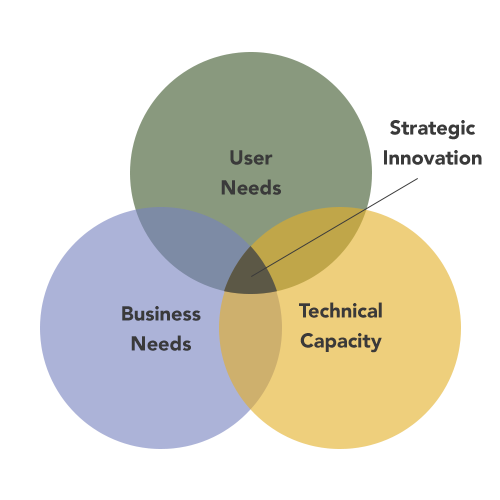 While constraints certainly exist, I’ve found success in the use of the following tools and methods:
While constraints certainly exist, I’ve found success in the use of the following tools and methods:
Double Diamond Model
To describe the whole process, I use the double diamond model from the UK’s Design Council.

Divided into four distinct phases:
- Discover – Broaden the scope of the project to discover the nature of problems that need solving.
- Define – Narrow the scope of the project according to the constraints of business.
- Iterate – Explore, test and refine potential design solutions.
- Implement – Deliver a viable solution and a roadmap for implementation.
User Interview
Ask users about their experiences using the product and their likes and dislikes.
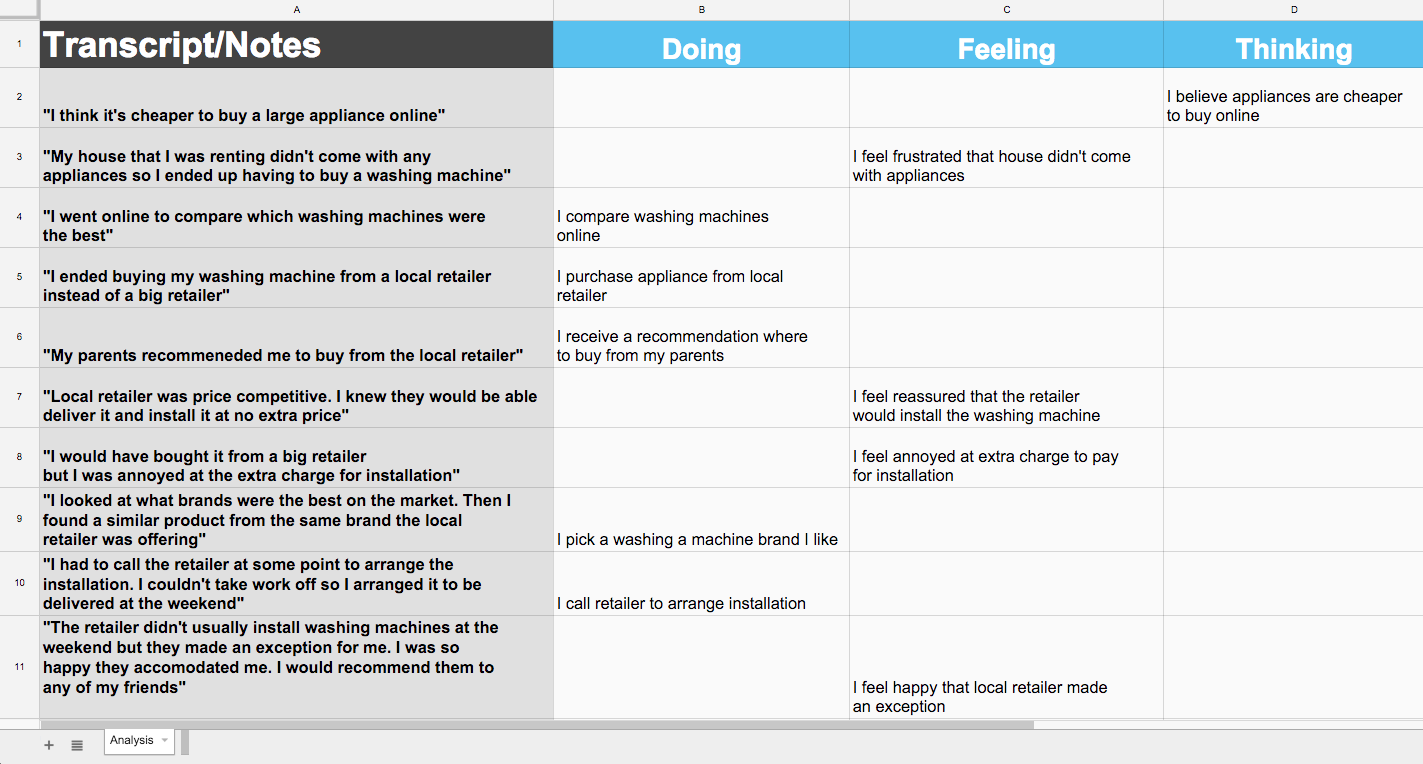
How Might We…
Find out users’ pain points and reframe them as opportunities.
Mental Model
Capture user behavior, pain points, motivations, and needs from contextual inquiries. Group into logical pillars. Map out product features for each pillar to identify gaps, opportunities, and feature bloat.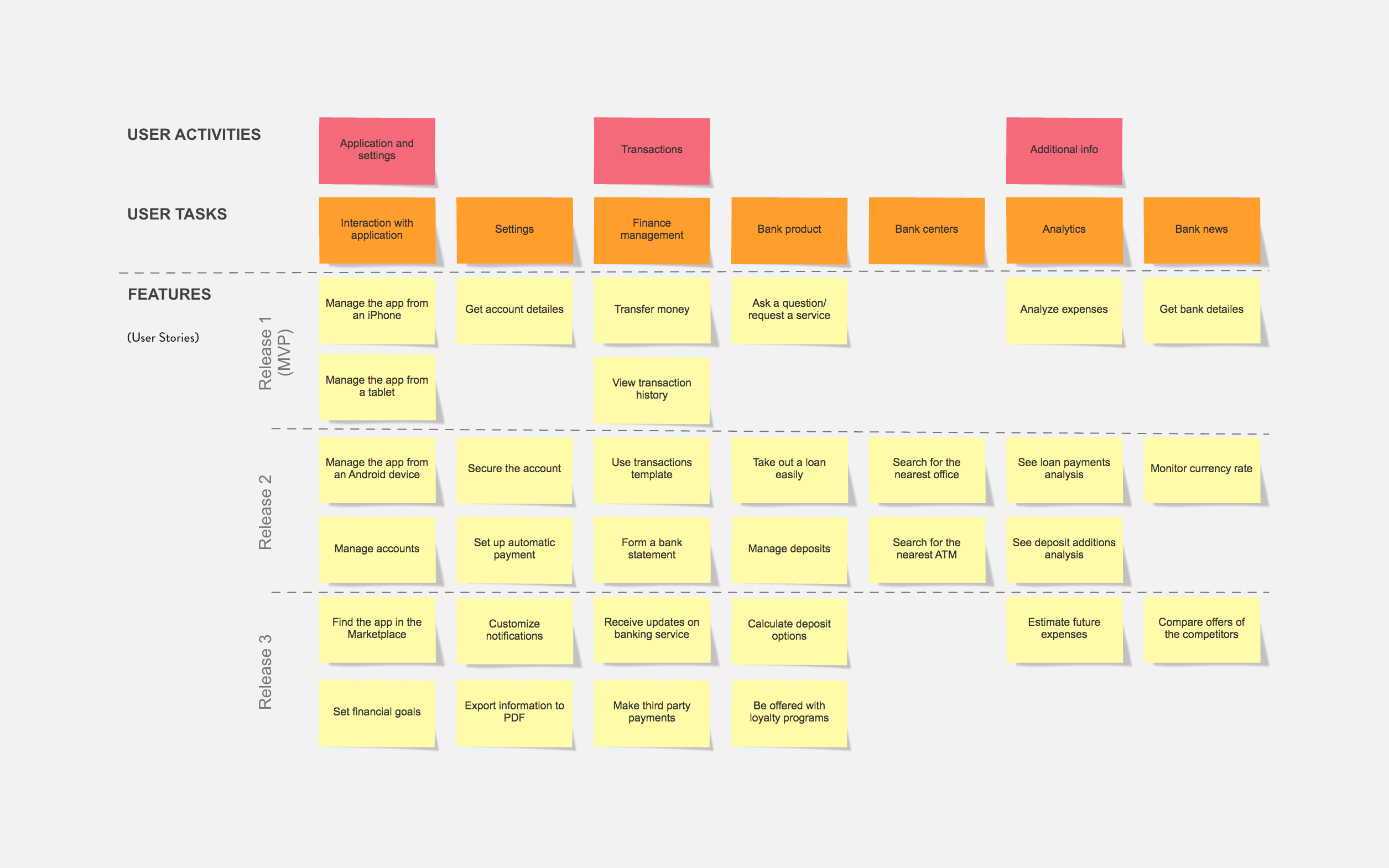
Customer journey map
Through investigating and visualizing customer behaviors across different touchpoints, designers can develop empathy for users and identify design opportunities.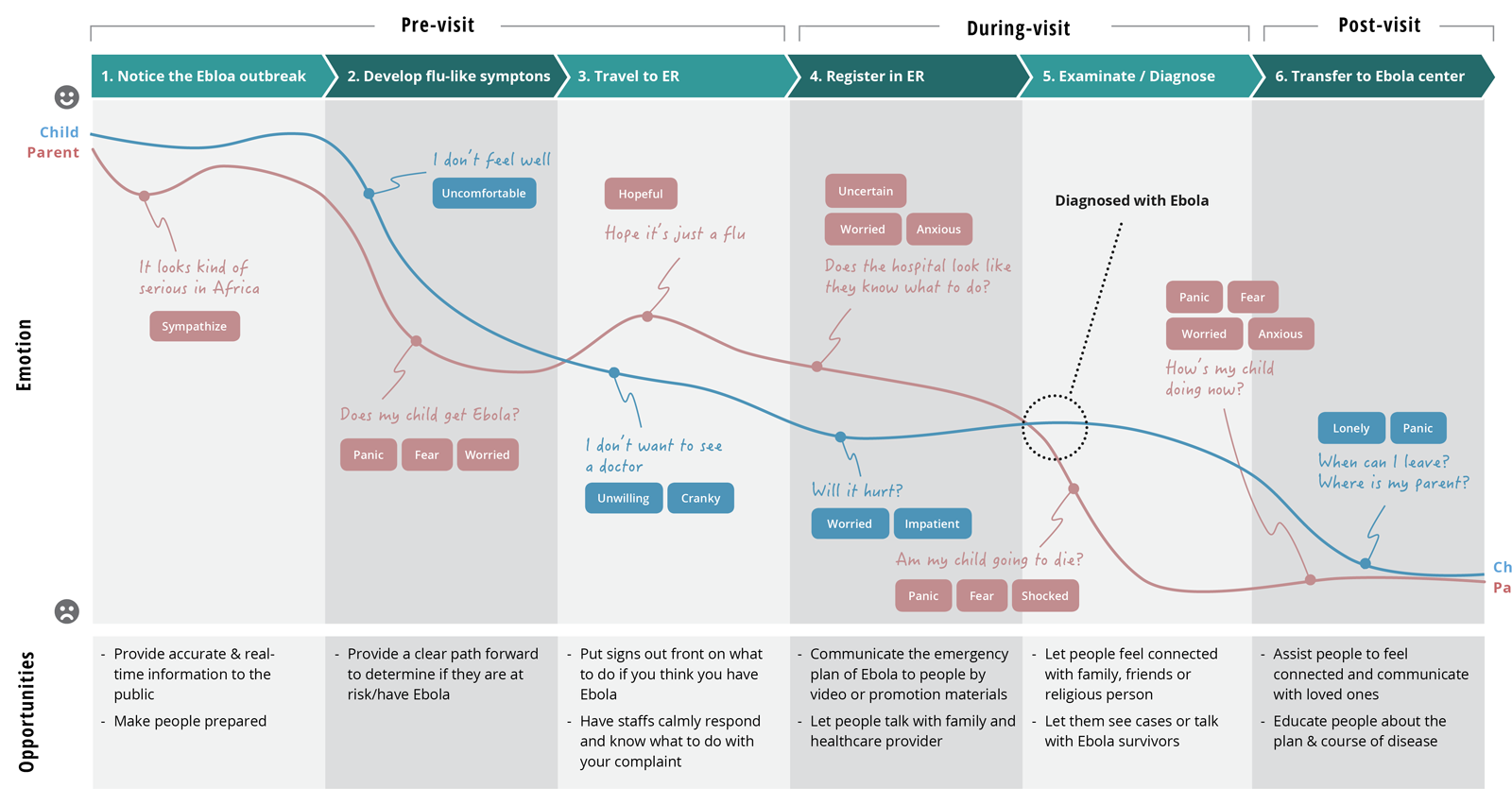
Competitive Analysis
Assess the strengths and weaknesses of competitors against your user’s needs.
Storyboards
Visually depict scenarios with storyboards. The storyboard should show the context, the problem, the user’s fears / motivations, and how the problem will be solved.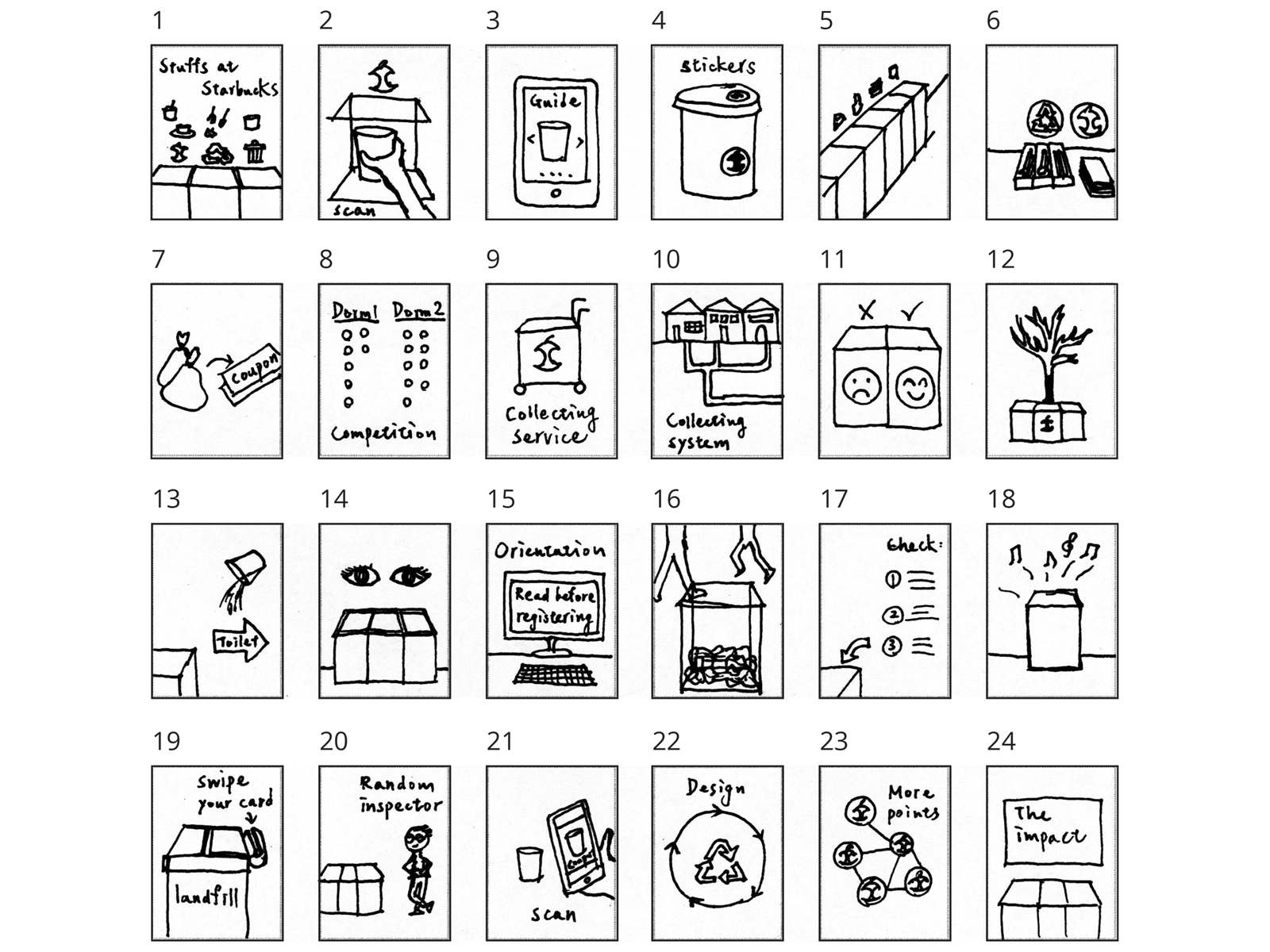
Wireframes
Visually communicate abstract concepts with users and team members to generate feedback. (use tools like Axure, illustrator or Sketch)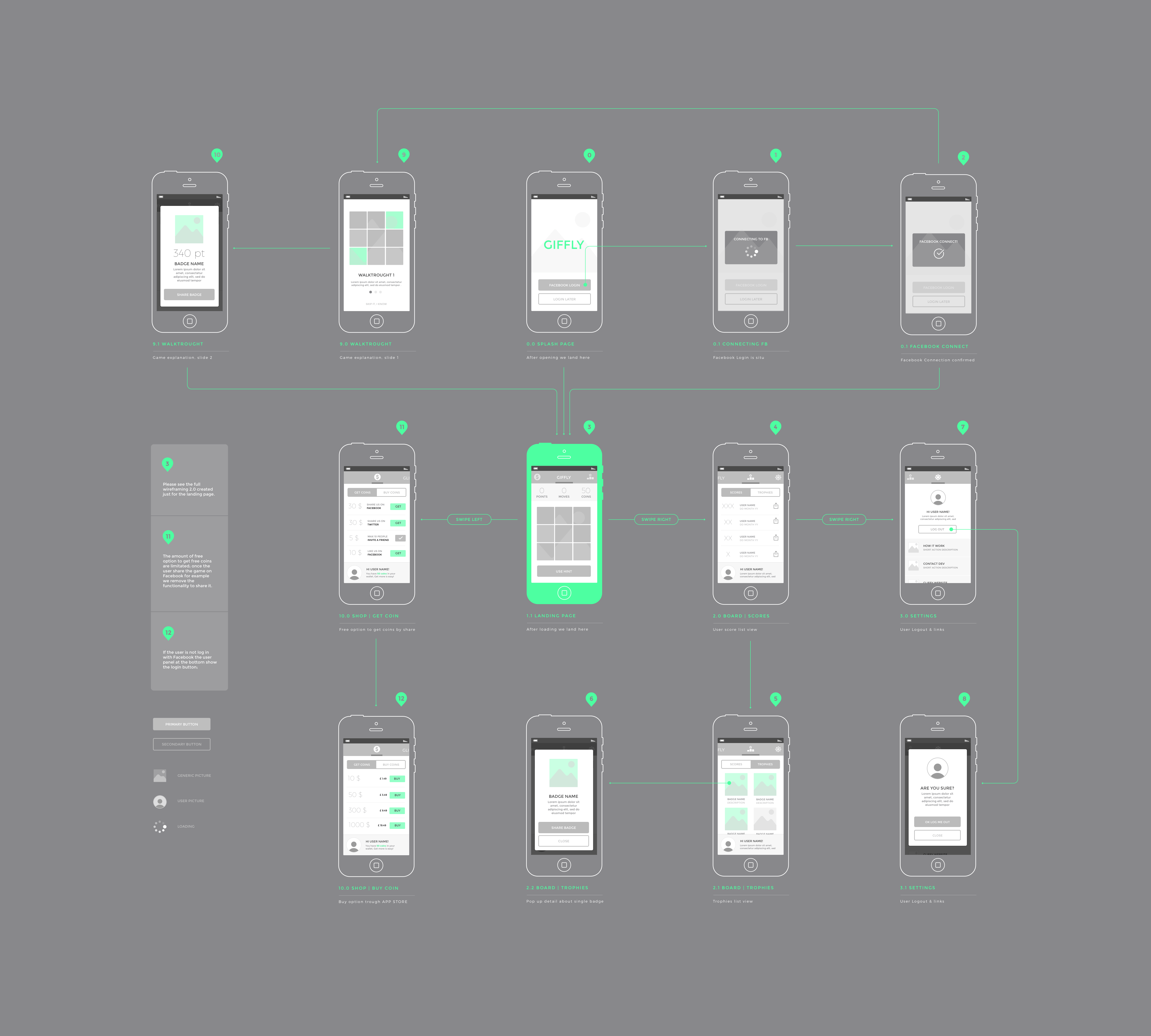
Rapid prototyping
Get users involved early in the design process with quick and inexpensive paper prototypes. Uncover usability issues and validate design decisions based on actual user reactions.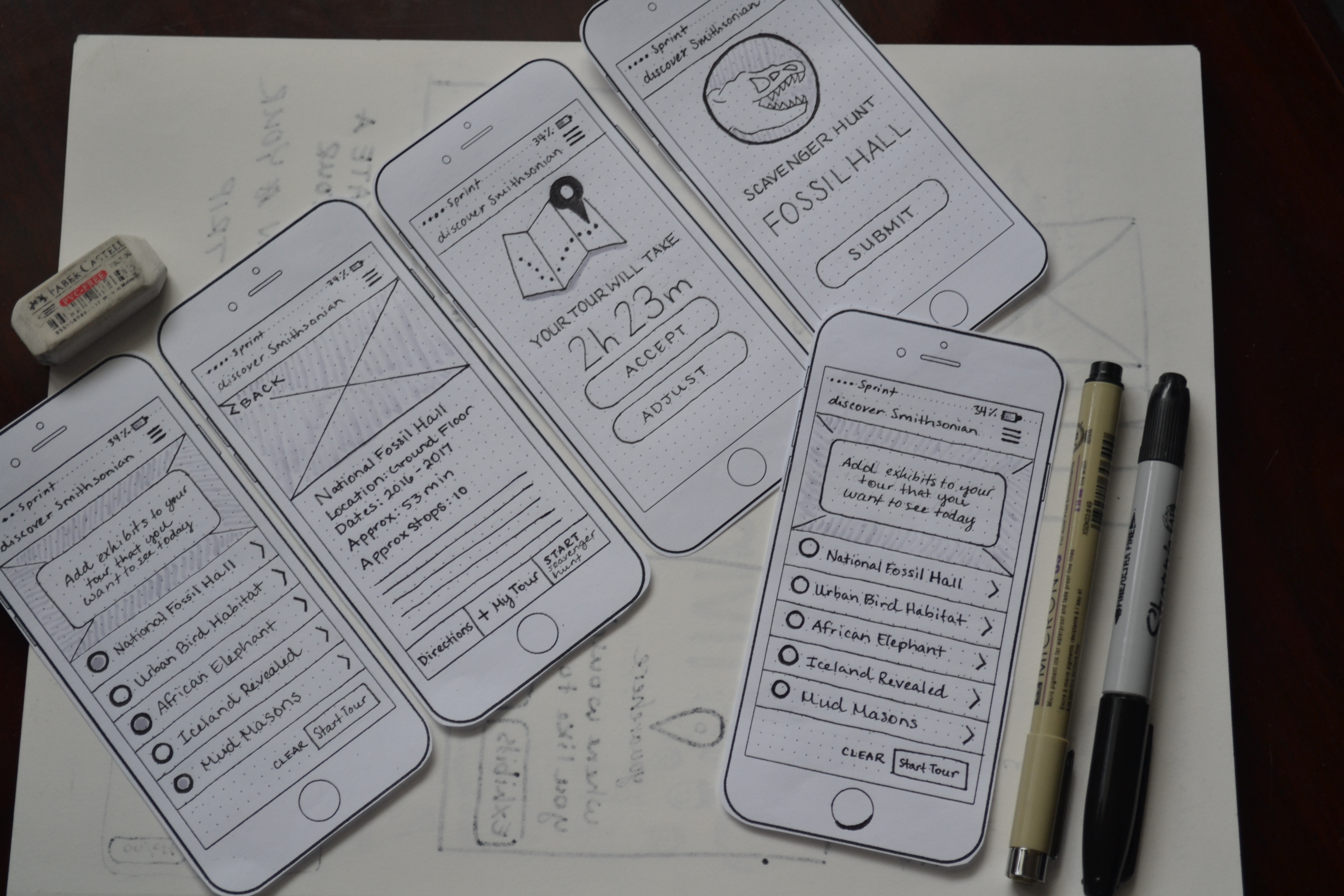
High Fidelity Mockups
Apply product branding, grid structure, typography, color scheme, and icons.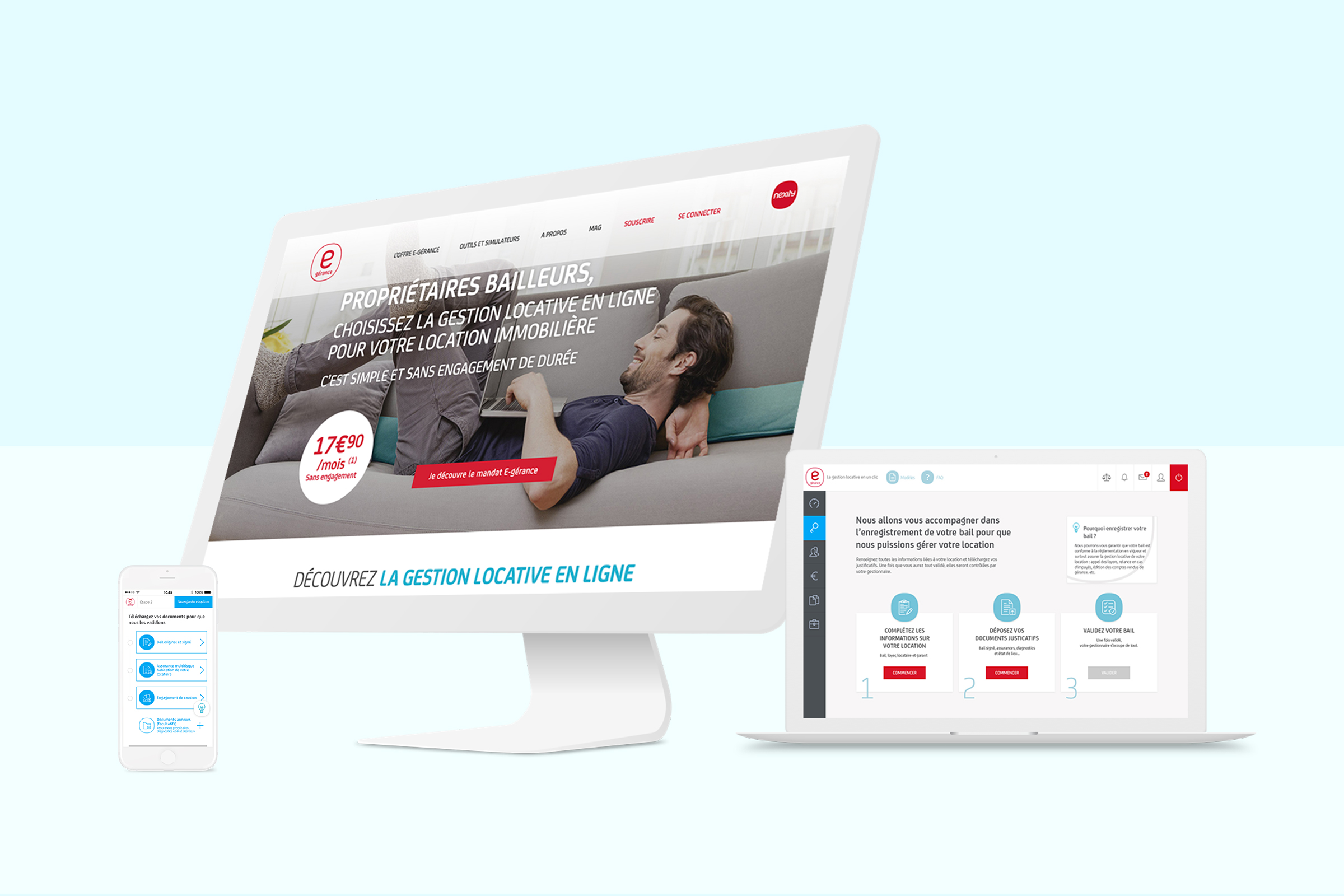
High Fidelity Prototypes
Quickly develop interactive prototypes with tools like InVision, Axure or Marvel, which lets the client and developers team easily distribute and observe exactly how well the product will be received before the product gets built.